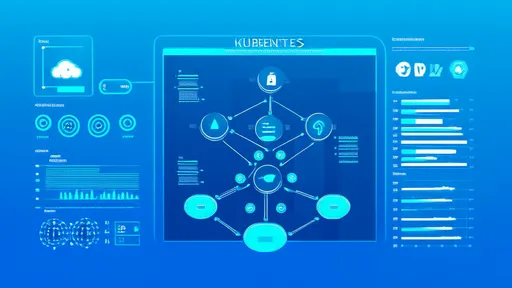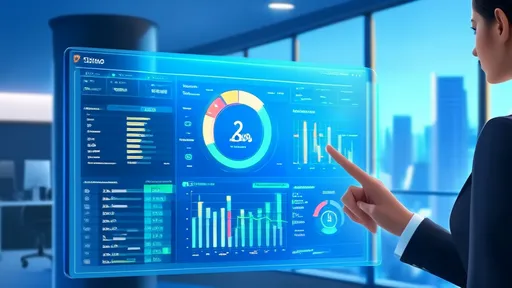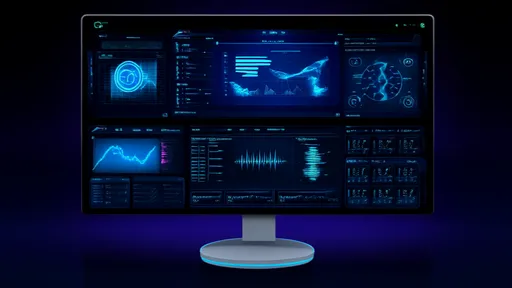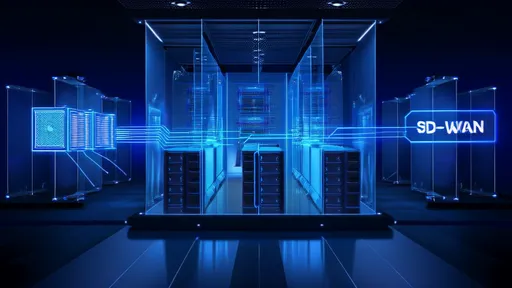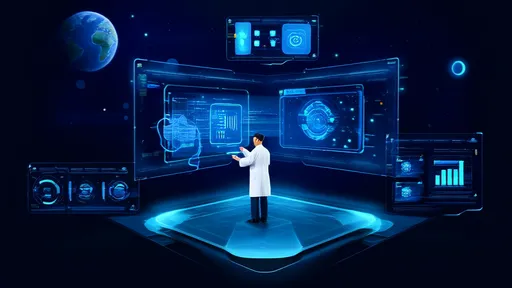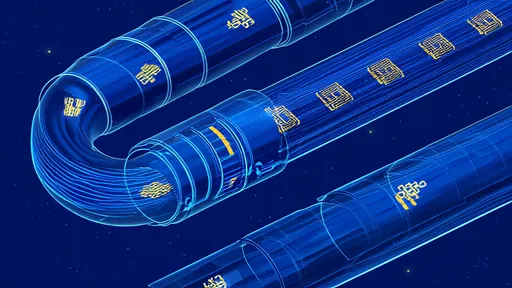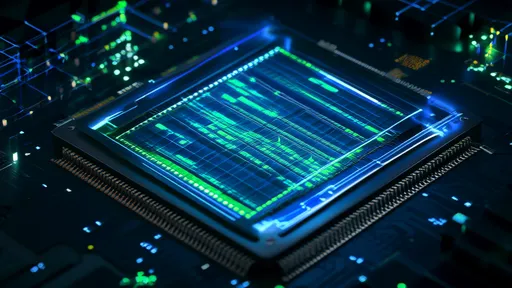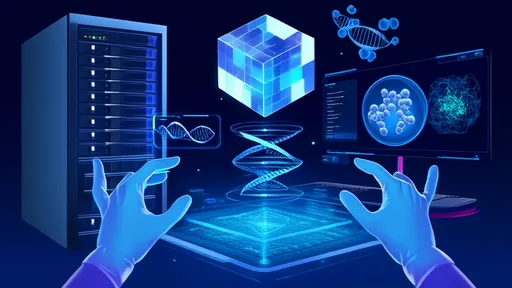In laboratories and research institutions across the globe, a quiet revolution is underway as artificial intelligence becomes an indispensable partner in scientific discovery. What was once the domain of human intuition, years of trial and error, and painstaking data analysis is now being accelerated at an unprecedented pace by machine learning algorithms and computational power. This transformation is not about replacing scientists but empowering them to ask bigger questions and uncover deeper truths about our universe.
The marriage of AI and science, often termed AI for Science, represents a paradigm shift in how research is conducted. From decoding the language of proteins to simulating climate systems, AI tools are handling complexities that have long stumped traditional methodologies. These systems excel at finding patterns in vast, multidimensional datasets—precisely the kind of information that modern scientific instruments generate. Where a human might overlook a subtle correlation or take months to validate a hypothesis, AI can process and cross-reference information in hours, suggesting new avenues for experimentation.
One of the most profound impacts has been in the field of drug discovery and healthcare. Developing a new medication is notoriously time-consuming and expensive, with a high rate of failure in the early stages. AI models are changing this by predicting how molecules will interact with biological targets, virtually screening millions of compounds to identify promising candidates. This not only speeds up the initial discovery phase but also helps in understanding disease mechanisms. For instance, during the COVID-19 pandemic, AI algorithms were deployed to model the virus's protein structures and suggest potential inhibitors, compressing years of research into months.
Similarly, in genomics, AI is unlocking the secrets buried in DNA sequences. Machine learning models can identify genetic markers associated with diseases, predict how mutations might affect health, and even assist in designing gene therapies. The ability to analyze entire genomes quickly allows for personalized medicine approaches, where treatments are tailored to an individual's genetic makeup. This would be practically impossible without the data-crunching capabilities of AI, turning what was once science fiction into clinical reality.
Physical sciences are experiencing their own renaissance thanks to AI. In physics, researchers use neural networks to analyze data from particle colliders like the Large Hadron Collider, spotting rare events that could indicate new particles or forces. Astronomy is another beneficiary; telescopes now produce more data than humans can possibly sift through. AI algorithms help classify galaxies, detect exoplanets, and even predict cosmic events like supernovae. By automating the tedious aspects of data analysis, scientists can focus on interpreting results and constructing theoretical models.
Materials science has embraced AI to design novel compounds with specific properties—whether it's a lighter alloy for aerospace, a more efficient battery material, or a polymer that breaks down more easily in the environment. Instead of relying solely on serendipity or incremental improvements, researchers use AI to simulate how atomic structures will behave, predicting their characteristics before ever synthesizing them in a lab. This accelerates the innovation cycle, bringing new materials to market faster and more efficiently.
Climate science and environmental research also leverage AI to tackle some of humanity's most pressing challenges. Complex climate models incorporate countless variables, from atmospheric chemistry to ocean currents. AI helps refine these models, making them more accurate and capable of forecasting long-term trends. It also processes satellite imagery to monitor deforestation, track pollution, or assess the health of coral reefs. These insights are critical for policymakers and conservation efforts, providing a data-driven basis for action.
Despite these advancements, the integration of AI into science is not without its hurdles. Data quality remains a significant concern; AI models are only as good as the data they are trained on. Biased or incomplete datasets can lead to flawed conclusions, potentially derailing research. Moreover, the black box nature of some complex AI systems can be problematic in science, where understanding the why behind a result is as important as the result itself. Researchers are addressing this by developing more interpretable AI models and combining them with traditional scientific methods to ensure robustness.
Ethical considerations also come into play, particularly in fields like biology and genetics. The power to manipulate genes or create new materials carries profound responsibilities. As AI accelerates these capabilities, the scientific community must grapple with questions about safety, equity, and unintended consequences. Establishing clear guidelines and ethical frameworks is essential to ensure that AI-driven science benefits humanity as a whole.
Looking ahead, the synergy between AI and scientific discovery is poised to grow even stronger. Emerging techniques like generative AI are not just analyzing existing data but proposing entirely new hypotheses, experimental designs, and even writing research papers. Some researchers envision a future where AI systems act as autonomous collaborators, suggesting novel ideas that humans might not consider. This could lead to breakthroughs in areas we have yet to imagine, from understanding consciousness to solving quantum gravity.
Ultimately, AI for Science is reshaping the very fabric of research, making it more collaborative, data-rich, and innovative. It is tearing down barriers between disciplines, enabling biologists to use tools from physics and chemists to borrow methods from computer science. This cross-pollination of ideas, accelerated by AI, is fostering a new era of discovery—one where the pace of progress is limited only by our curiosity and our willingness to embrace new technologies. The future of science is not just human or machine; it is a partnership that holds the promise of unlocking the deepest mysteries of the natural world.
In today's rapidly evolving cybersecurity landscape, organizations face increasingly sophisticated threats that traditional perimeter-based defenses struggle to contain. The concept of microsegmentation has emerged as a critical component of zero trust architecture, fundamentally transforming how enterprises protect their digital assets. Unlike conventional security approaches that focus on building strong outer walls, microsegmentation operates on the principle that no entity—whether inside or outside the network—should be automatically trusted.
In the ever-evolving landscape of container orchestration, Kubernetes has firmly established itself as the de facto standard for managing containerized applications at scale. One of its most powerful features is the ability to automatically scale applications in response to fluctuating demand, ensuring optimal performance while controlling costs. However, implementing an effective autoscaling strategy requires more than just enabling the feature; it demands a thoughtful approach grounded in proven best practices.
In today's digital landscape, cloud computing has become the backbone of modern business operations, offering unparalleled scalability and flexibility. However, this convenience comes at a cost—literally. As organizations increasingly migrate to the cloud, managing and controlling cloud expenditures has emerged as a critical challenge. Many companies find themselves grappling with unexpected bills, wasted resources, and a lack of visibility into where their cloud dollars are going. This is where FinOps, a cultural practice and operational framework, steps in to bring financial accountability to the world of cloud spending.
The cybersecurity landscape continues to evolve at a breakneck pace, with containerization sitting squarely at the heart of modern application development. As organizations increasingly deploy applications using technologies like Docker and Kubernetes, the security of the underlying container images has become a paramount concern. This has spurred the development and maturation of a robust market for container image vulnerability scanning tools, each promising to fortify the software supply chain. A comprehensive evaluation of these tools reveals a complex ecosystem where capabilities, integration depth, and operational efficiency vary significantly.
As enterprises continue their digital transformation journeys, the debate between SD-WAN and SASE for hybrid cloud connectivity has become increasingly prominent. These two technologies represent different generations of networking solutions, each with distinct approaches to addressing the complex challenges of modern distributed architectures. While SD-WAN emerged as a revolutionary improvement over traditional MPLS networks, SASE represents a more comprehensive framework that integrates networking and security into a unified cloud-native service.
The evolution of cloud-native databases has entered a new phase with the rise of serverless architectures. What began as a shift from on-premise data centers to cloud-hosted instances has now matured into a more dynamic, cost-efficient, and scalable paradigm. The serverless model represents a fundamental rethinking of how databases are provisioned, managed, and utilized, moving away from static resource allocation toward an on-demand, pay-per-use approach. This transformation is not merely a technical upgrade but a strategic enabler for businesses aiming to thrive in an unpredictable, data-intensive landscape.
In the rapidly evolving landscape of cloud-native computing, the demand for robust observability has never been more critical. As organizations migrate to dynamic, distributed architectures, traditional monitoring tools often fall short in providing the depth and real-time insights required to maintain system reliability and performance. Enter eBPF—extended Berkeley Packet Filter—a revolutionary technology that is redefining how we achieve observability in cloud-native environments. Originally designed for network packet filtering, eBPF has evolved into a powerful kernel-level tool that enables developers and operators to gain unprecedented visibility into their systems without modifying application code or restarting processes.
The landscape of enterprise IT has undergone a seismic shift with the widespread adoption of multi-cloud and hybrid cloud strategies. While this approach offers unparalleled flexibility, cost optimization, and avoids vendor lock-in, it introduces a formidable layer of complexity. At the heart of this complexity lies the significant challenge of managing compatibility across disparate cloud environments. Cross-cloud management platforms have emerged as the central nervous system for this new reality, but their effectiveness is directly tied to their ability to navigate a labyrinth of compatibility issues.
The economic implications of serverless computing have become a central topic in cloud architecture discussions, shifting the conversation from pure technical implementation to strategic financial optimization. As organizations increasingly adopt Function-as-a-Service (FaaS) platforms, understanding the nuanced cost structures and optimization opportunities has become critical for maintaining competitive advantage while controlling cloud expenditures.
The landscape of software development has undergone a seismic shift with the proliferation of cloud-native architectures. As organizations race to deliver applications faster and more reliably through CI/CD pipelines, a critical challenge has emerged: security. The traditional approach of bolting on security measures at the end of the development cycle is no longer tenable. It creates bottlenecks, delays releases, and often results in vulnerabilities being discovered too late, when remediation is most costly and disruptive. In response, a transformative strategy known as "shifting left" has gained significant traction, fundamentally rethinking how and when security is integrated into the software development lifecycle.
The landscape of software testing is undergoing a profound transformation, driven by the relentless integration of artificial intelligence. One of the most impactful and rapidly evolving applications of AI in this domain is the automation of test case generation. This is not merely an incremental improvement to existing processes; it represents a fundamental shift in how development teams approach quality assurance, promising to accelerate release cycles while simultaneously enhancing the robustness and coverage of testing regimens.
In the ever-evolving landscape of artificial intelligence, voice generation technology has emerged as one of the most captivating and, at times, unsettling advancements. The ability to clone and generate highly realistic human voices is no longer confined to the realms of science fiction; it is a present-day reality with profound implications. This technology, often referred to as voice cloning or neural voice synthesis, leverages deep learning models to analyze, replicate, and generate speech that is indistinguishable from that of a real person. The process begins with the collection of a sample of the target voice, which can be as short as a few seconds or as long as several hours, depending on the desired fidelity and the complexity of the model being used.
The semiconductor industry stands at an inflection point where traditional chip design methodologies are increasingly strained by the complexity of modern architectures. As Moore's Law continues its relentless march, the once-manual processes of floorplanning and routing have become prohibitively time-consuming and error-prone. In this challenging landscape, reinforcement learning has emerged not merely as an experimental approach but as a transformative force in automating and optimizing chip layout.
In laboratories and research institutions across the globe, a quiet revolution is underway as artificial intelligence becomes an indispensable partner in scientific discovery. What was once the domain of human intuition, years of trial and error, and painstaking data analysis is now being accelerated at an unprecedented pace by machine learning algorithms and computational power. This transformation is not about replacing scientists but empowering them to ask bigger questions and uncover deeper truths about our universe.
In the ever-evolving landscape of artificial intelligence, a quiet revolution is taking place that promises to fundamentally reshape how machines understand the world. For decades, the field has been dominated by correlation-based approaches—powerful pattern recognition systems that excel at finding statistical relationships in data but fall painfully short when it comes to true understanding. The emerging discipline of causal machine learning seeks to change this paradigm, moving beyond mere correlations to uncover the actual mechanisms that drive phenomena in the real world.

